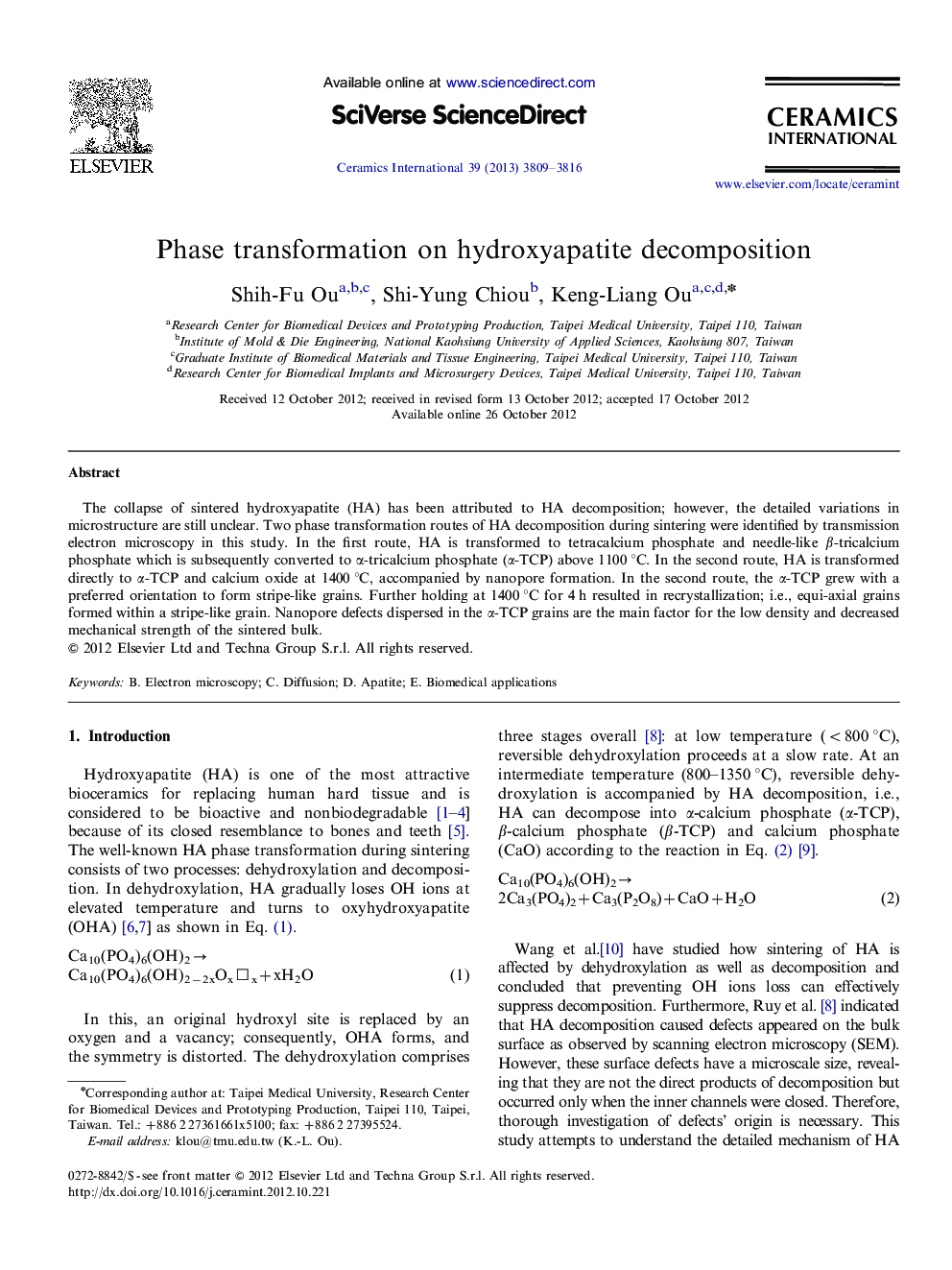| Article ID | Journal | Published Year | Pages | File Type |
|---|---|---|---|---|
| 1461749 | Ceramics International | 2013 | 8 Pages |
The collapse of sintered hydroxyapatite (HA) has been attributed to HA decomposition; however, the detailed variations in microstructure are still unclear. Two phase transformation routes of HA decomposition during sintering were identified by transmission electron microscopy in this study. In the first route, HA is transformed to tetracalcium phosphate and needle-like β-tricalcium phosphate which is subsequently converted to α-tricalcium phosphate (α-TCP) above 1100 °C. In the second route, HA is transformed directly to α-TCP and calcium oxide at 1400 °C, accompanied by nanopore formation. In the second route, the α-TCP grew with a preferred orientation to form stripe-like grains. Further holding at 1400 °C for 4 h resulted in recrystallization; i.e., equi-axial grains formed within a stripe-like grain. Nanopore defects dispersed in the α-TCP grains are the main factor for the low density and decreased mechanical strength of the sintered bulk.
